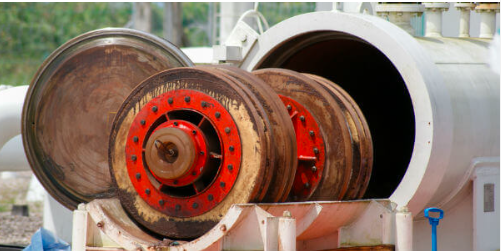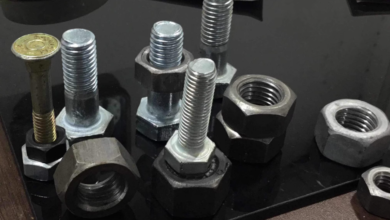
Maximizing ROI with Pigging Systems
In industries where pipelines are an essential part of operations, maintaining efficiency and minimizing costs is critical for maximizing profitability. One of the most effective ways to achieve this is by implementing a pigging system. A pigging system, designed to clean, inspect, and maintain pipelines, provides a substantial return on investment (ROI) by improving efficiency, reducing downtime, preventing contamination, and extending pipeline life. This article will explore the various factors contributing to the pigging system roi and why businesses across different sectors should consider them as part of their pipeline management strategy.
What is a Pigging System?
A pigging system consists of a device known as a “pig” that is inserted into a pipeline to perform various functions such as cleaning, separating products, or inspecting the pipeline’s condition. These systems operate automatically, allowing for continuous pipeline operations with minimal interruptions. By effectively managing the internal conditions of the pipeline, pigging systems ensure the flow of product remains optimal, and costly disruptions are avoided. There are different types of pigs, each serving a unique purpose, including cleaning pigs, inspection pigs, and separation pigs.
How Pigging Systems Contribute to ROI
The concept of ROI is critical when evaluating the implementation of any new system, especially one with initial setup costs. However, the long-term benefits of pigging systems far outweigh the upfront investments. Below, we examine several ways pigging systems contribute to significant ROI.
Improved Pipeline Efficiency
The most direct way in which pigging systems increase ROI is by enhancing pipeline efficiency. A clean pipeline offers fewer obstacles to the smooth flow of materials, reducing friction and pressure loss. The cleaning process ensures that no debris or sludge accumulates, which might otherwise slow down the flow, cause blockages, or create pressure drops.
With efficient flow, less energy is required to maintain the desired throughput, leading to lower operational costs. For instance, in the oil and gas industry, this means the energy needed to pump fluids through pipelines is reduced, which can significantly lower utility costs over time. As a result, businesses experience increased productivity without the need to invest heavily in additional equipment.
Reduction in Downtime
Unplanned downtime is one of the most costly issues in industries that depend on pipelines for transportation of goods, especially in sectors like oil and gas, pharmaceuticals, and food processing. When a pipeline becomes blocked or contaminated, operations are disrupted, resulting in costly delays.
Pigging systems can reduce this downtime by offering a proactive, automated solution to pipeline maintenance. By integrating pipeline inspection services into pigging systems, businesses can identify potential issues early, preventing costly failures and ensuring uninterrupted operations. Instead of waiting for issues to arise and then shutting down the system for repairs or cleaning, pigging systems allow businesses to continuously clean and inspect pipelines while keeping the operation running. This in-line maintenance approach ensures there are fewer disruptions, resulting in more consistent productivity and ultimately, a higher ROI.
Read also: Balancing Technology and Human Touch: A Guide to Successful Self-Ordering System Implementation
By using pigging systems to keep the pipelines in good shape, businesses not only avoid repair costs but also reduce the frequency of emergency repairs, which can be highly disruptive and expensive. In this way, pigging systems help protect long-term capital investment and extend the lifespan of pipeline infrastructure.
5. Increased Regulatory Compliance
In industries where regulatory standards are stringent, such as pharmaceuticals and food processing, maintaining compliance is critical. Pigging systems contribute to compliance by ensuring that pipelines are properly cleaned and inspected, preventing contamination and ensuring the safety of products being transported.
For example, in pharmaceutical production, the cleaning process facilitated by pigging systems ensures that product batches are not cross-contaminated, which helps companies meet strict regulatory standards. Regulatory compliance is crucial not only for avoiding fines and penalties but also for ensuring a good relationship with regulatory authorities.
This proactive approach to compliance can protect companies from costly legal issues and improve their market position by demonstrating a commitment to safety and quality standards. Therefore, implementing pigging systems can reduce the risk of regulatory breaches, contributing to a better ROI.
6. Reduced Maintenance Costs
Traditional pipeline cleaning methods often require manual labor, which is both costly and inefficient. These methods may also involve shutting down the pipeline for extended periods to carry out maintenance tasks. Pigging systems, on the other hand, offer an automated solution that reduces the need for manual intervention and minimizes pipeline shutdown time.
By using pigging systems for routine maintenance, businesses can reduce the number of workers required for cleaning, maintenance, and inspections. Additionally, because pigging systems prevent the buildup of materials that can cause damage, they also reduce the need for expensive repairs or overhauls. This reduction in labor and maintenance costs significantly improves the overall ROI of a pigging system.
7. Sustainability and Environmental Benefits
Environmental concerns are a growing consideration in many industries. Pigging systems help businesses adhere to sustainability initiatives by reducing waste, preventing spills, and minimizing the environmental impact of their operations. For instance, cleaning and maintaining pipelines with pigs helps prevent leaks or product loss, reducing the chances of contamination in the surrounding environment.
Moreover, by improving the overall efficiency of pipeline operations, pigging systems reduce energy consumption and product waste, leading to more sustainable practices that are both eco-friendly and cost-effective.
Conclusion
The Pigging system rois is undeniable when evaluating the various benefits they offer to industries that rely on pipeline infrastructure. By improving pipeline efficiency, reducing downtime, preventing contamination, extending the lifespan of pipelines, and ensuring regulatory compliance, pigging systems provide significant cost savings and operational improvements.
While the initial investment in pigging technology may be substantial, the long-term benefits far outweigh the upfront costs. For companies looking to maximize their ROI, implementing a pigging system is a strategic decision that enhances operational performance, reduces risks, and increases profitability. With a pigging system in place, businesses can ensure their pipelines run smoothly, efficiently, and profitably for years to come.




